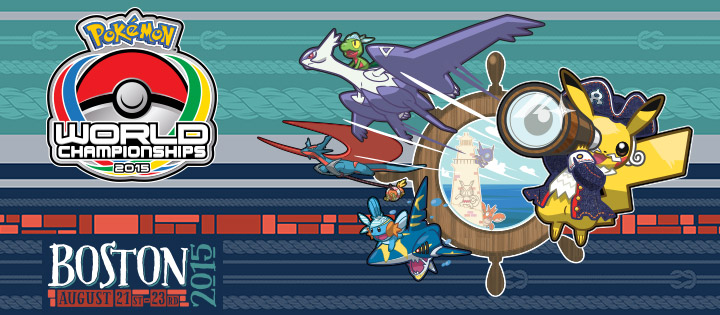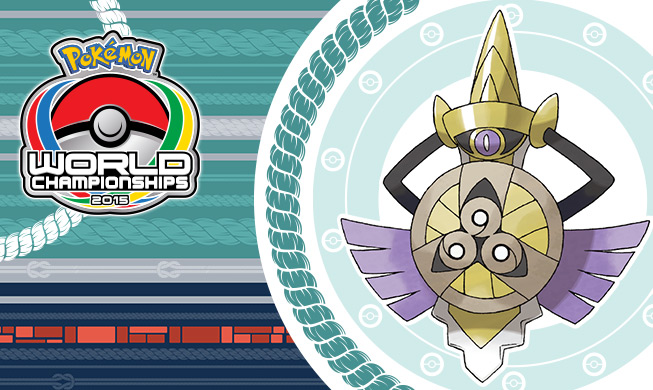
After a year of building teams and battling in tournaments, the top players from all over the world have earned their invitations to the 2015 World Championships. In just two weeks, their hard work will pay off with what they’ve worked for all season: an opportunity to battle against the best Pokémon video game players in the world. The title of World Champion and over $100,000 in scholarships in each age division are on the line!
The tournament format has changed significantly since the 2014 World Championships. Instead of play starting on Saturday, the festivities will now begin on Friday. Also, the Last Chance Qualifier is gone. Instead, players who finished near the top of their regions will face a final challenge before they move on to the traditional Saturday Worlds Swiss play—a field of players representing 29 countries competing for the final spots!
On Friday, players will compete in best-of-three Swiss rounds, and only players with two or fewer losses at the end of the day will move on to Saturday. The players who advance will face a gauntlet of difficult battles, as Friday’s survivors will be joined on Saturday by the top finishers from every region. After another day of best-of-three Swiss play, only the top eight players will make it to the single-elimination final stage bracket to determine the 2015 World Champion.
Unless otherwise stated, all the statistics in this article refer to the Masters Division.
Rock Paper Kangaskhan
Success in the Pokémon World Championships often comes down to understanding which Pokémon are the most powerful and which are chosen to stop those top Pokémon. The strongest Trainers will have teams of Pokémon that stop both of those groups. This might sound a little complicated, but the teams from last year’s World Championships can help shed some light on the challenge of staying ahead of the curve.
 Going into the 2014 World Championships, Mega Kangaskhan was the most feared Pokémon, so Trainers brought a barrage of Pokémon to help defeat the Parent Pokémon. The field was full of Pokémon with the Intimidate Ability to lower Kangaskhan’s Attack, such as Gyarados, Mawile, and Salamence. Also popular were Pokémon that Mega Kangaskhan had a type disadvantage against, such as Aegislash, Mega Mawile, and Mega Lucario. The Top-8 round featured five Mega Mawile, two Mega Lucario, and eight teams with an Intimidate Pokémon—but zero Mega Kangaskhan. The Pokémon that had been widely considered by players to be the most powerful available had a best finish of only 14th place.
Going into the 2014 World Championships, Mega Kangaskhan was the most feared Pokémon, so Trainers brought a barrage of Pokémon to help defeat the Parent Pokémon. The field was full of Pokémon with the Intimidate Ability to lower Kangaskhan’s Attack, such as Gyarados, Mawile, and Salamence. Also popular were Pokémon that Mega Kangaskhan had a type disadvantage against, such as Aegislash, Mega Mawile, and Mega Lucario. The Top-8 round featured five Mega Mawile, two Mega Lucario, and eight teams with an Intimidate Pokémon—but zero Mega Kangaskhan. The Pokémon that had been widely considered by players to be the most powerful available had a best finish of only 14th place.
Most of the top teams held their ground against Intimidate by making sure at least half of their Pokémon didn’t rely on their Attack stats. They also used Pokémon such as Hydreigon, Mega Charizard Y, and Heat Rotom to defeat the Steel-type Pokémon that other Trainers brought to trouble Mega Kangaskhan. There was even a trend toward top players giving their Garchomp a Choice Band or Life Orb to hold. Garchomp was popular throughout the 2014 season, but it would have lost its chance to get many key Knock Outs without the opportunity to inflict extra damage with its item due to Mega Kangaskhan attracting so many Intimidate users.
Plans to defeat Mega Kangaskhan will again be a big part of the strategies Trainers bring to the 2015 World Championships, but this year there is a much larger group of key Pokémon to prepare for. Below are the top Pokémon to look out for.
Predictable Intimidates: Landorus Therian Forme and Salamence
As was the case at last year’s World Championships, Intimidate is likely to be seen on many teams at the 2015 World Championships. Outside of the relatively rarely seen Scrafty, Intimidate almost always comes from two Pokémon: Landorus Therian Forme and Salamence. Intimidate is so powerful that players are likely to see a Landorus or Salamence virtually every round, making them key targets for Trainers. It’s no surprise that Landorus was the most common Pokémon appearing in the Top-8 round of the National Championships in Germany, Italy, Japan, Australia, and the United States, while Mega Salamence was the second most common Mega-Evolved Pokémon overall in those tournaments after Mega Kangaskhan.
 Both Landorus Therian Forme and Salamence struggle with similar opponents thanks to their common 4× weaknesses to Ice-type attacks. We saw a variety of defensive Water-type Pokémon with Ice Beam aimed at taking these Pokémon down in the top cut of US Nationals. Politoed, Gastrodon, and Jellicent were the favorites for this purpose. Wash Rotom was also popular because it could deal huge damage to Landorus with Hydro Pump and Burn Mega Salamence, while taking little damage from either Pokémon. Despite being used only once on Day 2 of US Nationals play, the most interesting Pokémon players may use to defeat Pokémon with Intimidate is Milotic. It not only has access to Ice Beam but also the Competitive Ability, which causes it to gain two levels of Special Attack when Intimidated. Milotic and Bisharp (with its similar Defiant Ability) may be common on teams looking to stack Pokémon reliant on their Attack stats in spite of the popularity of Intimidate.
Both Landorus Therian Forme and Salamence struggle with similar opponents thanks to their common 4× weaknesses to Ice-type attacks. We saw a variety of defensive Water-type Pokémon with Ice Beam aimed at taking these Pokémon down in the top cut of US Nationals. Politoed, Gastrodon, and Jellicent were the favorites for this purpose. Wash Rotom was also popular because it could deal huge damage to Landorus with Hydro Pump and Burn Mega Salamence, while taking little damage from either Pokémon. Despite being used only once on Day 2 of US Nationals play, the most interesting Pokémon players may use to defeat Pokémon with Intimidate is Milotic. It not only has access to Ice Beam but also the Competitive Ability, which causes it to gain two levels of Special Attack when Intimidated. Milotic and Bisharp (with its similar Defiant Ability) may be common on teams looking to stack Pokémon reliant on their Attack stats in spite of the popularity of Intimidate.
Aegislash
Aegislash may be the most reliable Pokémon in the format, so it’s sure to be selected and targeted by many Trainers in Boston. It has excellent defensive typing, the versatility to be strong on both offense and defense thanks to its Stance Change Ability, and King’s Shield is a great deterrent to Pokémon that value their Attack stats. It even has access to Wide Guard, which can confound opponents expecting to defeat Steel-type Pokémon with spread attacks like Earthquake or Heat Wave.
Making Aegislash less effective will be a difficult task for Trainers. Many players have attempted to counter Aegislash with their own Aegislash. They train their Aegislash to be just a bit quicker than opposing Aegislash so their Aegislash can move first with Substitute or a super-effective Shadow Ball. It’s a tricky game to play—if Aegislash is trained to be too quick, more opposing Pokémon will be able to move after Aegislash and attack it in its vulnerable Blade Forme.
 Special Attacks that enable opposing Pokémon to ignore Aegislash’s Attack-lowering King’s Shield are, by far, the safest way to take Aegislash down. And with Wide Guard being used on so many Aegislash (72.22% in Day 2 at US Nationals), single-target Special Attacks are the most reliable option to deal with Aegislash. These factors were on display at the US Nationals, as Charizard and Heatran both used the single-target Flamethrower and Overheat frequently to help deal with Aegislash. Similarly, after two Landorus built to use Special Attacks made the top cut of US Nationals (one in each of its Formes), more Trainers may look to try that out in Boston. These Landorus were able to get around Wide Guard by using one of the few Ground-type special moves, the powerful single-target move Earth Power. Another Pokémon that Trainers are likely to bring to help deal with Aegislash is annual World Championships hero Hydreigon, which boasts the most powerful Dark Pulse move available. Even some Tyranitar may bring Dark Pulse, as Tyranitar have begun to trend back toward Special Attacks like Ice Beam to better deal with Landorus and Salamence.
Special Attacks that enable opposing Pokémon to ignore Aegislash’s Attack-lowering King’s Shield are, by far, the safest way to take Aegislash down. And with Wide Guard being used on so many Aegislash (72.22% in Day 2 at US Nationals), single-target Special Attacks are the most reliable option to deal with Aegislash. These factors were on display at the US Nationals, as Charizard and Heatran both used the single-target Flamethrower and Overheat frequently to help deal with Aegislash. Similarly, after two Landorus built to use Special Attacks made the top cut of US Nationals (one in each of its Formes), more Trainers may look to try that out in Boston. These Landorus were able to get around Wide Guard by using one of the few Ground-type special moves, the powerful single-target move Earth Power. Another Pokémon that Trainers are likely to bring to help deal with Aegislash is annual World Championships hero Hydreigon, which boasts the most powerful Dark Pulse move available. Even some Tyranitar may bring Dark Pulse, as Tyranitar have begun to trend back toward Special Attacks like Ice Beam to better deal with Landorus and Salamence.
Other Pokémon to Watch
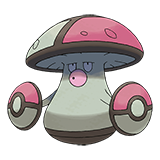 Only Landorus, Kangaskhan, and Aegislash appeared in the Top-8 round of more National tournaments in Europe, Japan, Australia, and the US than Amoonguss. Since it’s used by Trainers to protect its teammates with Spore and Rage Powder instead of doing damage, a surge in Taunt from Thundurus (used by 13 of 16 Thundurus that made Day 2 of US Nationals) has been a big step toward players trying to stop Amoonguss’ dominance. Amoonguss became one of the most important Pokémon to counter in last year’s World Championships. Savvy Trainers may again turn to Grass-type Pokémon or the item Safety Goggles, as they did last year, in order to get around Amoonguss’ Spore and Rage Powder.
Only Landorus, Kangaskhan, and Aegislash appeared in the Top-8 round of more National tournaments in Europe, Japan, Australia, and the US than Amoonguss. Since it’s used by Trainers to protect its teammates with Spore and Rage Powder instead of doing damage, a surge in Taunt from Thundurus (used by 13 of 16 Thundurus that made Day 2 of US Nationals) has been a big step toward players trying to stop Amoonguss’ dominance. Amoonguss became one of the most important Pokémon to counter in last year’s World Championships. Savvy Trainers may again turn to Grass-type Pokémon or the item Safety Goggles, as they did last year, in order to get around Amoonguss’ Spore and Rage Powder.
Heatran was the next most frequently used Pokémon during the National Championships worldwide. It’ll be another key Pokémon to prepare for, especially with the recent rise in Heatran holding a Shuca Berry, making it much more difficult to simply swat Heatran away with an Earthquake.
 Mega Charizard Y was the second most popular Mega Pokémon at the US Nationals, and it even won South Korean, Japanese, and German Nationals. In spite of its success, it wasn’t a common choice outside of the US for most of the year. A weakness to Landorus has kept it from becoming too popular. But with many experienced players choosing to put an item other than Choice Scarf on Landorus as they prepare for the World Championships, the naturally faster Charizard may have an opportunity to rise up.
Mega Charizard Y was the second most popular Mega Pokémon at the US Nationals, and it even won South Korean, Japanese, and German Nationals. In spite of its success, it wasn’t a common choice outside of the US for most of the year. A weakness to Landorus has kept it from becoming too popular. But with many experienced players choosing to put an item other than Choice Scarf on Landorus as they prepare for the World Championships, the naturally faster Charizard may have an opportunity to rise up.
Mega Gardevoir was on both teams that made the finals at the US National Championships, and it has been popular in Japan. Both tournaments surely are fresh in the minds of Trainers preparing for the World Championships, but for most of the year Mega Gardevoir was seen as a lesser threat than Mega Kangaskhan, Mega Salamence, or Mega Charizard Y. Trainers will have to decide for themselves whether Mega Gardevoir is a top Pokémon, or if other Mega-Evolved Pokémon are the best choices to use and prepare for. Most Trainers choose only one for their teams, and none of these Pokémon is considered strong enough to be included on contending teams unless it is intended for Mega Evolution.
Thundurus was the second most common Pokémon in US Nationals Day 2 play, but it was significantly less popular throughout worldwide Top-8 teams. It will be another Pokémon that Trainers will need answers to, but it may be less important to prepare for than Aegislash or Landorus.
An Aspiring Champion’s Dilemma
Figuring out which Pokémon will be most common is one of the most important parts of preparing for the World Championships. With many National tournaments taking place as far back as May, competitors will have to reevaluate the field.
In general, many players will probably look to the US National Championships for guidance on which Pokémon to expect; it was both the most recent National tournament—and one of the only National tournaments featuring only best-of-three matches like the World Championships.
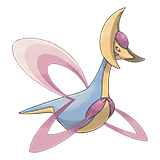 Two Pokémon that Trainers, especially those from outside the US, should keep an eye on are Cresselia and Charizard. Each was seen on only three teams total among Top-8 finishers at the three European National Championships, and once each in Japan’s Top-8. The two made a much bigger impact in the United States; both were featured on two teams in the Top-8 and on ten teams that made it to Day 2 play. Ten appearances elevated them to the same level as Heatran, a Pokémon that was seen on over three times as many top-8 teams as Charizard and Cresselia were between Europe, Japan, Australia, and the United States. This large difference in popularity creates a difficult dilemma for Trainers: will the rest of the world continue to stay away from these Pokémon, or is US Nationals an indicator of what we’ll see in Boston?
Two Pokémon that Trainers, especially those from outside the US, should keep an eye on are Cresselia and Charizard. Each was seen on only three teams total among Top-8 finishers at the three European National Championships, and once each in Japan’s Top-8. The two made a much bigger impact in the United States; both were featured on two teams in the Top-8 and on ten teams that made it to Day 2 play. Ten appearances elevated them to the same level as Heatran, a Pokémon that was seen on over three times as many top-8 teams as Charizard and Cresselia were between Europe, Japan, Australia, and the United States. This large difference in popularity creates a difficult dilemma for Trainers: will the rest of the world continue to stay away from these Pokémon, or is US Nationals an indicator of what we’ll see in Boston?
We opened by discussing the continued dominance of Mega Kangaskhan, but its prevalence at the 2015 World Championships is an open question. It dominated most early National Championships, winning in the UK, Italy, South Africa, and Japan. It has been by far the most popular Mega-Evolved Pokémon, appearing on a staggering 22 teams reaching the Top-8 in National Championships in Europe, Japan, Australia, and the United States. That’s the same number of teams the next three Pokémon on the list—Mega Salamence (11), Mega Charizard Y (6), and Mega Gardevoir (5)—appeared on combined.
Despite all that, Mega Kangaskhan had a disappointing performance at US Nationals. It was still the most common Mega Pokémon, but almost half of the Kangaskhan that made it to Day 2 finished with a losing record. Only one Mega Kangaskhan made it to the top cut, a number that Mega Salamence (3), Mega Gardevoir (2), and Mega Charizard Y (2) all exceeded. The field at US Nationals was prepared for Kangaskhan, just as it was at the 2014 World Championships. Going into the 2015 World Championships, Trainers will have to make a difficult call: will the field will once again stack itself against Mega Kangaskhan?
Trainers will battle Trainers from many different countries, each with their own taste in Pokémon and their own perspective on battling. Some players may gain an advantage by figuring out which Pokémon will stay popular with various groups of players in spite of those Pokémon not being popular globally.
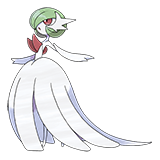 Pokémon iconic to the tricky play style of many Japanese Battle Spot players, like Mega Gardevoir and Amoonguss, probably didn’t surprise many foreign players when they were seen most frequently in Japan’s Top-8. What may be more surprising is Zapdos making half of its total Top-8 Nationals appearances in Japan. Trainers may be better able to anticipate the field at the World Championships by keeping an eye on tendencies like these from the various National tournaments.
Pokémon iconic to the tricky play style of many Japanese Battle Spot players, like Mega Gardevoir and Amoonguss, probably didn’t surprise many foreign players when they were seen most frequently in Japan’s Top-8. What may be more surprising is Zapdos making half of its total Top-8 Nationals appearances in Japan. Trainers may be better able to anticipate the field at the World Championships by keeping an eye on tendencies like these from the various National tournaments.
Trainers are hard at work strategizing to make sure they can handle the most intimidating Pokémon at the World Championships. But even researching all of this year’s past tournaments won’t prepare players for everything they could face in the World Championships, as each year it has been a tournament full of surprises. We hadn’t seen much of the winning Pachirisu and Gyarados combination Se Jun Park used to win the 2014 World Championships in earlier tournaments last year, nor Arash Ommati’s winning combination of Mamoswine and Tornadus the year before.
Any tricky teams players have been perfecting over the course of the season are sure to come out in Boston. The best way to find which secret tactics are about to shake up the world of Pokémon is to watch the livestream at Pokemon.com/Worlds from August 21–23. And remember, you can always find the most recent strategy content at Pokemon.com/Strategy!

